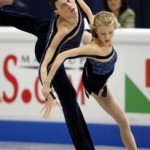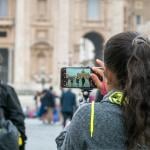Every week in The Kiddy Pool, Erin Newcomb confronts one of many issues that parents must deal with related to popular culture.
In Adam Rex’s novel The True Meaning of Smekday, narrator Tip tries to explain the story of Noah’s Ark to her new alien friend J.Lo. Tip describes the wallpaper from her childhood bedroom: “it had cute pictures of Noah’s ark. His boat. Adorable little zebras and elephants and things. It’s a popular story for little kids, I guess because of all the animals.” She realizes that her bedroom wallpaper contained no imagery of rain, or the flood, or the destruction and death of every creature not safely housed on the boat. “It’s the worst tragedy ever,” she concludes. And in a book made endearing and amusing because of its irony, hyperbole, and child’s eye view of the world, Tip’s remark is telling in its mature and accurate recognition of an apocalyptic event.
And Rex’s example is equally illustrative of the way that we use and interpret Noah’s ark in popular culture. Consider the children’s book adaptations, the plush toys, the popular Fisher Price Little People ark set, the nursery décor collections, and the birthday party supplies, to name a few renditions of the Old Testament tale. I understand the rainbow at the story’s ending can serve as a symbol of hope, but its promise is also conditional—that God will never again destroy the earth by flood again. It’s a question of means, not ends. What so many of these children’s products demonstrate is the way that we gloss over the beginning of the story (where humans are indicted for our wickedness) as well as the end (where we get a fresh start but not a free pass). We focus instead on the animals, rendering them cuter and more cheerful than they likely would have been under the ark’s conditions. Not all of these versions do this to the same extent or in the same way, and some of the books especially are reasonably faithful to the Biblical narrative. Yet all of them exhibit our collective fascination with turning a story of the end of the world into a children’s story.
In some cases, teaching children Noah’s story is a way to teach children about human nature and humanity’s relationship with God; in other cases, Noah’s story is turned into a non-threatening, cutesy narrative, an object to be played with, a toy with little relevance for the material or spiritual worlds. It depends, of course, on what we do with Noah’s story and our toy arks. I don’t recommend terrifying children with stories of the world’s end or the wicked ways of humans, but I also don’t recommend sugarcoating the stories until they are sapped of their original meaning. We are wicked sinners, all. Noah’s story serves as a warning to love God, obey God, and, yes, to fear God. It reminds us of our place in creation and our utter dependence on God. It can reveal our desire to teach and learn from the Biblical stories or our desire to dominate or revise unflattering portraits of humanity. Or maybe we just like cute animals and archaic sailing vessels.
Noah’s story may be “the worst tragedy ever,” but it is one of many tragedies that defines humanity’s relationship with God. We sin and fall short. We repent and try again. We are held responsible for the vulnerable creatures in our care. We trust that the rain will cease and fear that it might not. And somewhere in the middle, we, like Tip, try to get by, making strangers into friends and seeking meaning even in the midst of tragedy. We edit the story, revise it, and pass it on changed and yet unchanged. We emphasize the rainbow and the animals. We might be stuck on a smelly boat lilting in the sea, but we believe with all our hearts and minds and souls, like the God who saved Noah, like the hobbit who urged his friend “There’s some good in this world, Mr. Frodo…and it’s worth fighting for.” We need to be honest about what our stories mean and what they say about humanity, but we also need hope. And sometimes, that means focusing on the rainbow instead of the rain.











